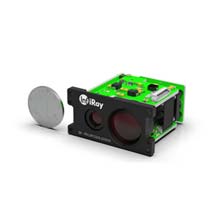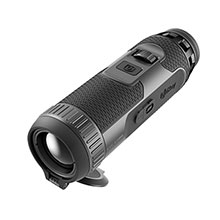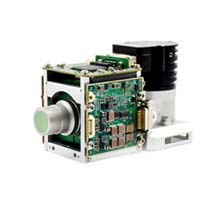Thermal Imaging vs Night Vision: Understanding the Differences

In today's world, where technology has revolutionized everything, it's not surprising that we have night vision and thermal imaging devices. These two technologies are widely used in a variety of applications, including surveillance, hunting, firefighting and so on. However, many people confuse them, as they both provide the ability to see in low light conditions. In this article, we will discuss in greater depth the differences between thermal imaging and night vision, how they work, and their pros and cons.
What is Thermal Imaging?
Thermal imaging is a technology that detects the heat signature of an object to create an image. It works by capturing the infrared radiation emitted by the object, which is then processed to produce an image that represents the temperature distribution of the object.
Thermal imaging has several advantages over other technologies. For one, it can detect heat signatures from great distances, even in total darkness, fog, or smoke. It's also not affected by light pollution, as it doesn't rely on visible light. Moreover, it is capable of detecting the temperature of an object or a living being, making it ideal for applications that require temperature monitoring.

InfiRay thermal imaging cameras can see through the darkness
Some of the applications of thermal imaging include:
· Firefighting: Thermal imaging is used in firefighting operations to detect hot spots or people trapped inside burning buildings.
· Industrial applications: Thermal imaging is used in various industrial applications, such as detecting insulation defects, electrical problems, and water leaks.
· Medical applications: Thermal imaging is used in medical applications to detect inflammation and monitor body temperature.
What is Night Vision?
Night vision is a technology that enhances the available light to enable people to see in low-light conditions. It works by collecting the available light, such as moonlight or starlight, and amplifying it to create an image. The image is usually green, as the human eye is most sensitive to green light in low-light conditions.
Night vision has its advantages over other technologies as well. For example, it's relatively affordable, lightweight, and portable, making it ideal for applications that require mobility. Additionally, it can provide a detailed image of the surrounding area, enabling people to see terrain features and objects that would otherwise be invisible.
Some of the applications of night vision include:
· Hunting and camping: Night vision is used by hunters and campers to navigate in the dark.
· Security and surveillance: Night vision is used in security and surveillance operations to monitor restricted areas.

InfiRay combines night vision and thermal imaging to extend the range of human visual perception
Thermal Imaging vs. Night Vision: A Comparison
Although thermal imaging and night vision share the ability to see in low-light conditions, they work differently and have different pros and cons. Here's a detailed comparison of the two technologies:
1. Working Principle
Thermal imaging works by detecting the infrared radiation emitted by an object, while night vision works by amplifying available light. As a result, thermal imaging can see in complete darkness, while night vision requires some ambient light to function.
2. Image Quality
Thermal imaging produces an image that represents the temperature distribution of an object, while night vision produces an image that represents the light distribution of the scene. Therefore, thermal imaging is better at detecting heat signatures, while night vision is better at providing a detailed image of the surrounding area.

Can you tell the difference between thermal imaging and night vision from this picture?
3. Environmental Factors
Thermal imaging is not affected by environmental factors such as light pollution, fog, or smoke, while night vision can be affected by these factors. Thermal imaging can also detect temperature variations, making it useful for applications such as detecting electrical problems or monitoring body temperature. In contrast, night vision can provide a more detailed image of the surroundings, making it useful for navigation or situational awareness.
4. Cost
Thermal imaging devices are generally more expensive than night vision devices, as they require more sophisticated technology to detect and process infrared radiation. However, the cost of thermal imaging has come down significantly in recent years, making it more accessible to a wider range of applications.
5. Applications
Thermal imaging is primarily used in applications that require temperature detection or monitoring, such as industrial inspections or medical applications. It's also useful for search and rescue, where detecting heat signatures can be critical. But with the advancement of thermal imaging technology, more and more people are starting to use it in their daily lives as well. Hunting or outdoor activities with a thermal imaging camera has also become a very fashionable activity. Night vision, on the other hand, is useful in applications that require situational awareness or navigation in low-light conditions, such as hunting, camping, or security and surveillance.

With the InfiRay thermal imaging camera, you can even see a deer drooling at night
In summary, thermal imaging and night vision are two technologies that enable people to see in low-light conditions. Thermal imaging works by detecting the infrared radiation emitted by an object, while night vision works by amplifying available light. Thermal imaging can see in complete darkness and is better at detecting temperature variations, while night vision is better at providing a detailed image of the surroundings. Both technologies have their pros and cons, and the choice between them depends on the specific application and requirements.
Both thermal imaging and night vision are valuable tools that have found their way into a variety of applications, from firefighting and law enforcement to hunting and camping. As technology continues to advance, we can expect to see further improvements in these technologies, making them even more versatile and useful.

















